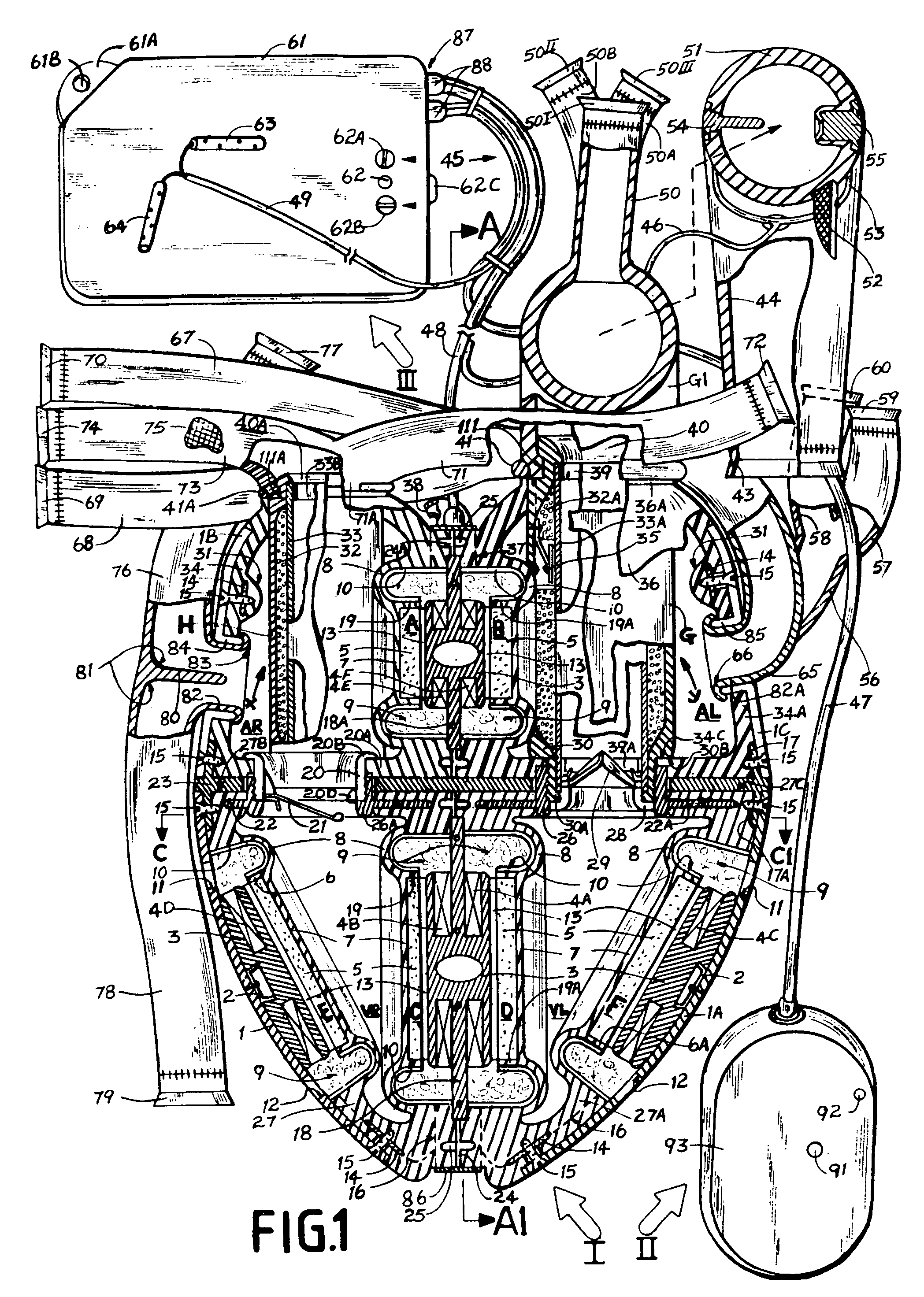Wholly implantable non-natural heart for humans
a human heart and artificial heart technology, applied in the field of artificial heart for humans, can solve the problems of thrombogenesis by damaging blood cells, and achieve the effects of prolonging human life, easy electronic control, and facilitating miniaturization
- Summary
- Abstract
- Description
- Claims
- Application Information
AI Technical Summary
Benefits of technology
Problems solved by technology
Method used
Image
Examples
Embodiment Construction
[0057]Close observation of the arrangement of FIG. 1 shows that the chassis member 23 is essentially an I-beam design to provide the desired strength to support the rest of the member components. The thickness of the walls of the surrounds should be made such that they permit rapid axial responses of the moving magnets with varying excursion distances while having the toughness to withstand long service life. This is why reinforcement is very important. Also, true laminar flow is encouraged throughout this design. All valves and mounting components are designed to have no sharp edges that will destroy blood components and set off thrombogenic events. It is desirable as shown in the design and preference of materials of construction that the valves have adequate damping factor on closure so as to reduce the tendency to destroy the blood components.
[0058]The iron sheets of the actuators can easily be miniaturized by cutting with lasers. It is possible in the future to utilize MEMS gen...
PUM
 Login to View More
Login to View More Abstract
Description
Claims
Application Information
 Login to View More
Login to View More - R&D
- Intellectual Property
- Life Sciences
- Materials
- Tech Scout
- Unparalleled Data Quality
- Higher Quality Content
- 60% Fewer Hallucinations
Browse by: Latest US Patents, China's latest patents, Technical Efficacy Thesaurus, Application Domain, Technology Topic, Popular Technical Reports.
© 2025 PatSnap. All rights reserved.Legal|Privacy policy|Modern Slavery Act Transparency Statement|Sitemap|About US| Contact US: help@patsnap.com



